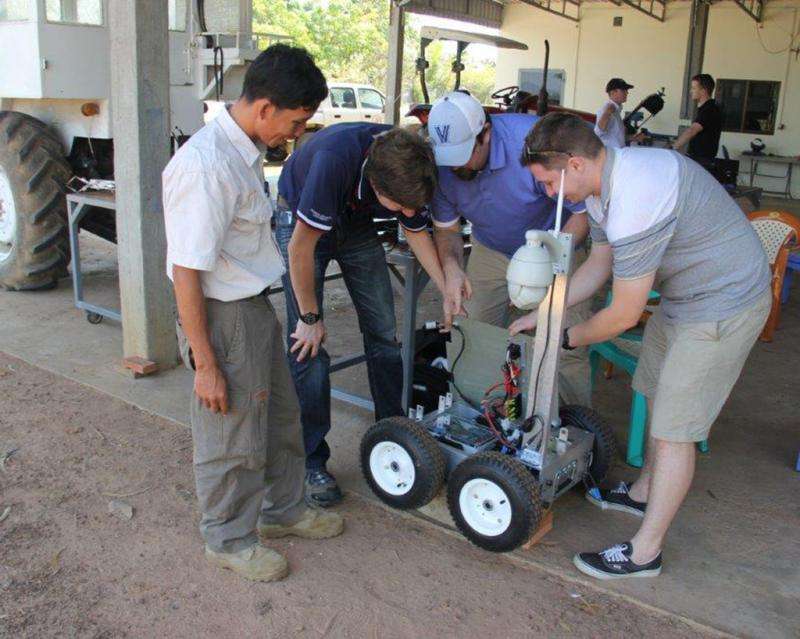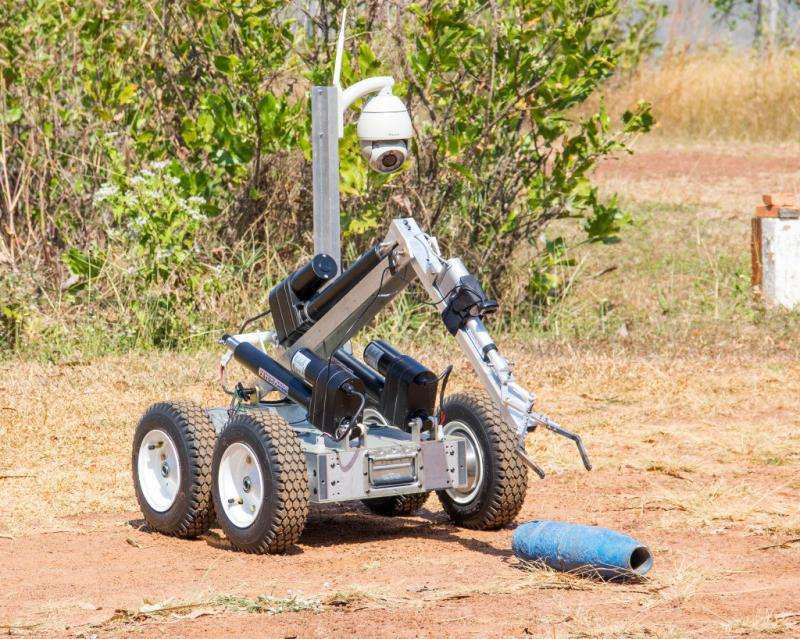Engineers respond to UXO crisis with low-cost EOD robot

Starting in 1965 and continuing for three decades, Cambodia was embroiled in armed conflict. US bombings during the Vietnam War made Cambodia perhaps the most bombed country in history. Many of these bombs did not explode, leaving UXO throughout the country. Following this period, the Khmer Rouge came to power resulting in the Cambodian genocide. The Khmer Rouge were eventually pushed to the Cambodia-Thailand border, where significant numbers of landmines were deployed by both Cambodia and Thailand to prevent the Khmer Rouge from entering their respective countries.
More than 4500 km2 in Cambodia are contaminated with explosive remnants of war (ERW), which has significantly affected Cambodia in a number of ways. For example, as of June 2012, more than 64,121 people had been killed, injured or disabled in accidents, and economic growth is stifled because expansion of farms and other livelihood activities is impeded.
This problem exists in other developing countries as well. IEDs have caused more than 53,000 civilian deaths worldwide in the last three years. While developing world explosive ordnance disposal technicians do amazing work, they do not necessarily have access to expensive military-grade EOD robots and therefore, must put themselves in higher risk situations than their developed world counterparts. Thus, there is a need for a lower-cost EOD robot solution.
Villanova EOD Robot
In order to address this need, Villanova University Department of Mechanical Engineering faculty and students have collaborated with the Golden West Humanitarian Foundation (GWHF), a US-based non-profit organization. GWHF is recognized as a world leader in research and development for the humanitarian mine-action and ERW remediation community and employs former EOD technicians and experienced humanitarian-world engineers.
Objective
The primary objective of this project is to design and build a low-cost humanitarian explosive ordnance disposal robot capable of operating in low-income countries, like Cambodia. The following specs were developed by the Villanova and GWHF team:
- Intended sale price must be below $10,000 to make it an economically viable option for low-income nations
- Components must be either locally available or suitable for mass ordering to ensure that the robot can be fixed locally in a timely and affordable manner
- Size constraints require the robot to be movable by two people, weigh one hundred pounds or less, and be transportable in a pickup truck
- Remote operability and an ability to navigate rough terrain are integral to keep operators at a safe distance and enable the robot to operate in all areas of Cambodia

Project Status
Since 2013, four Villanova Engineering faculty and more than 25 Villanova Engineering students have worked on the EOD robot project. In January 2015, after conducting field trials in Cambodia, the latest prototype was determined ready to undergo redesign for production.
The primary objectives have been met:
- The model is made from low cost computer hardware
- It can be assembled in-country and repaired locally
- It fits into a suitcase so that it can be taken on a plane and deployed to different locations
- The robot control interface has been designed for intuitive operation to enable users with limited training
As of late 2016, Villanova is working on finding donors to help with bringing the robot to market.
Provided by Villanova University

















